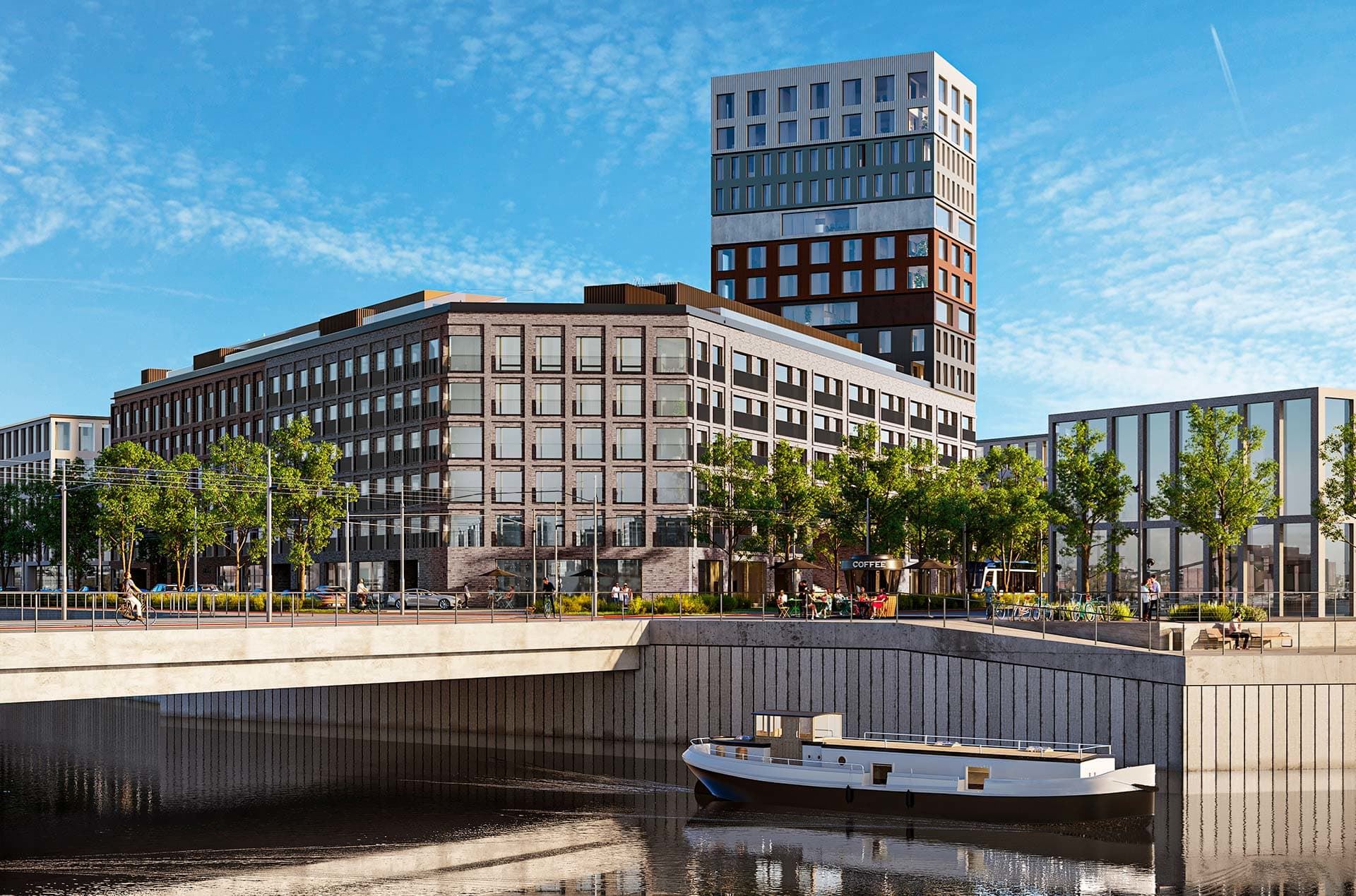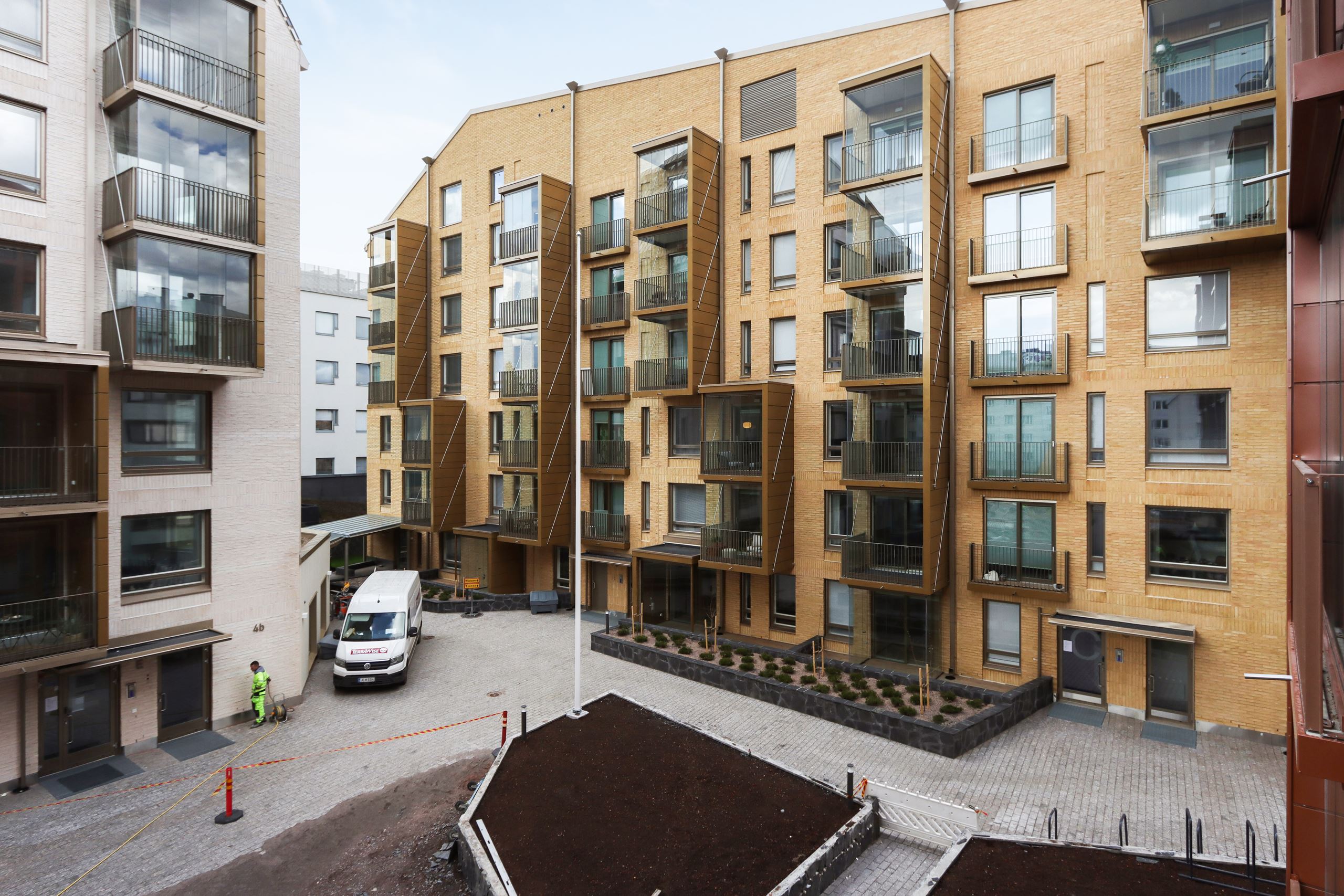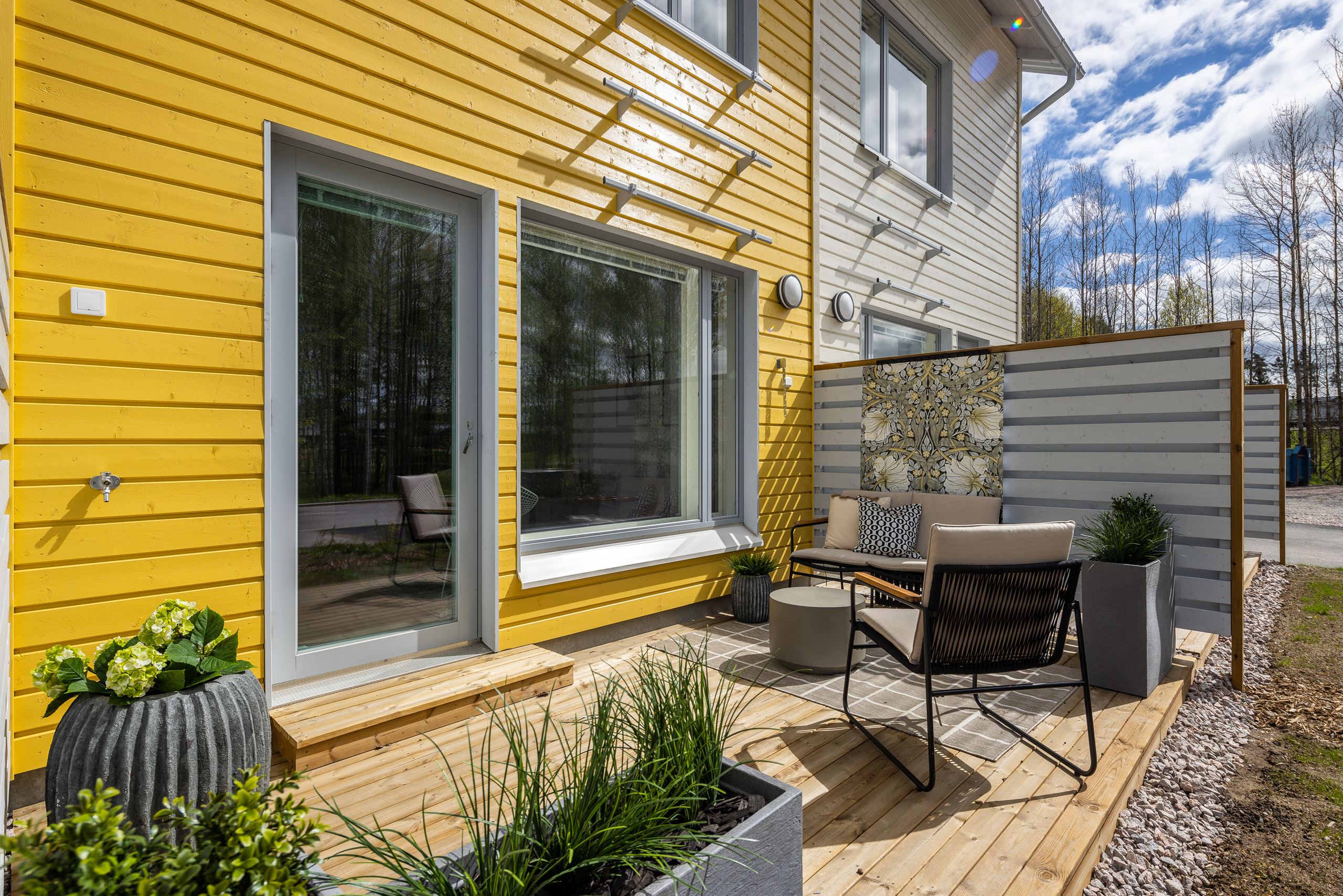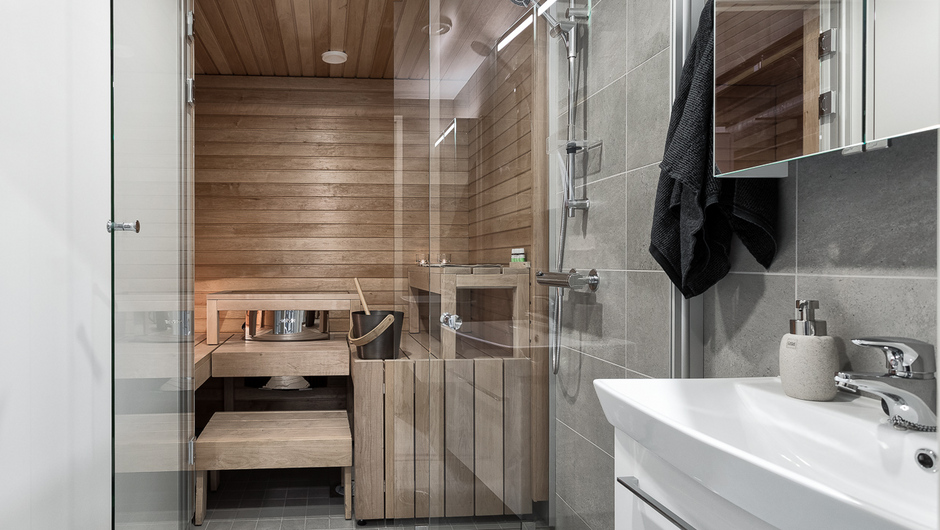Sustainable data centers as a service
- Construction
- Home
- Sustainability
- 10/23/2023
Energy efficiency for more sustainable homes
The energy efficiency of buildings plays a vital role in reducing the carbon footprint – and when it comes to new construction, the bar must be set especially high. At that point, enter the frame: a sensible heating method, carefully considered insulation and thoroughly optimised technical building systems.

According to Motiva’s expert Teemu Kettunen, when it comes to construction, the key factors are the tightness of the external envelope, i.e. the heat insulated structural layer isolating the building from outdoor air, such as the external wall, as well as windows’ energy-efficient thermal transmittance values.
“With modern technologies, the wall structures can be thinner without compromising on energy efficiency,” says Kettunen.
In addition to heating domestic water, ventilation is in many cases the single element that contributes most to the building’s energy consumption. Besides choosing the right ventilation unit, you can improve the energy efficiency of ventilation by utilising heat transmission pipes installed in the ground, i.e. a ground-coupled heat exchanger.
“It pays off to look into pre-heating the supply air through the ground-coupled heat exchanger,” says Kettunen.
Tight is best
Aki Pirttijärvi, Planning Manager, Technical Building Systems, YIT, agrees. There are many ways to affect the energy efficiency of a building.
“The number one thing is insulating the envelope – whether you’re talking about the walls, roof, base floor or windows – but that is already in really good shape in Finland,” says Pirttijärvi. In this field, Finland is a global trailblazer.
“When it comes to tightness, our new apartment buildings are in practice built as passive buildings. In other words, they consume less heating energy than usual.”
The second key factor is ventilation – its level and efficiency as well as the efficacy of heat recovery.
“For this, ventilation units offer good solutions,” says Pirttijärvi.

Heating domestic water hits your wallet
The third smart move is optimising domestic water heating. Currently, as much as 40% of the energy consumed by households – especially in new buildings where the most obvious energy drains have already been tackled – may be down to heating domestic water. One solution to the dilemma is to install eco-friendly taps that optimise water use.
“Measuring the water consumption of homes, which is done as remote metering, has also brought good results,” says Pirttijärvi.
Pirttijärvi knows that people often change their consumption is metered. “It can have a massive effect on consumption.”
Renewable energy – a rule, not an exception
When it comes to new buildings, Kettunen recommends using renewable energies whenever feasible. For instance, geothermal heat is an environmentally friendly solution for heating apartments, communal facilities and domestic hot water. Increasingly, district heating also uses renewable energy.
Lately, there has been high demand for solar power:
“Solar panels produce electricity and reduce the building’s E-value, so they should definitely be considered unless the roof is badly in shade,” says Kettunen.
Some buildings have even installed solar heat systems, although solar electricity systems are more commonplace.
According to Pirttijärvi, an apartment building with a class A energy rating is extremely difficult to build without using renewable energy.
“In practice, if you want to achieve class A, you will need either geothermal heat or solar electricity.”
At the start of 2023, YIT made the decision to make all new planned apartment buildings class A buildings.

Sompasaari leads the way in class A
Municipalities and cities are also paying attention to energy classes. For example, the City of Helsinki has adopted a policy which dictates that buildings constructed on specific plots must comply with energy class A. As Oy Nihdin torni and As Oy Nihdin kulma in Sompasaari are examples of apartment buildings using a wide range of ecological solutions.
“The buildings have solar panels on the roof and, as a novelty, recover heat from waste water. This means that heat is recovered from water that has already been used,” explains Pirttijärvi.
At these sites, further thought has gone into ways of keeping urban apartments cool in summer heat.
“Protective panes shielding windows from the sun prevent most extreme heating, which has an instant effect on the comfort of living.”
Dynamic load management, please!
Often, energy efficient living includes an electric vehicle. In order to optimise energy consumption, a certain level of interoperability is required between the vehicle and building. The key factor is dynamic load management, which monitors the load on the electricity connection and automatically adjusts the charging power.
“As electric vehicles in Finland are mainly charged at home, power management has become a new issue. Dynamic load control helps with it,” says Kettunen.
Anyways, the trend is for smart homes where machines talk to each other, running a low-carbon daily operation. And so, a home using exchange electricity can schedule its electricity consumption to save money, for example.
“New electricity meters are equipped with a connection that enables the home automation system to receive nearly real-time consumption data,” says Kettunen.

Remotely monitored technical building systems
YIT uses the Valvomo service available to new housing companies in Greater Helsinki. The service is provided by Caverion.
“Valvomo remotely monitors 24/7 the technical building systems of sites constructed by YIT,” says Pirttijärvi.
Looking for anomalies and other red flags in data, Valvomo’s algorithms enable proactive prevention.
“For example, if the operation of a ventilation unit becomes faulty, the system detects it. An engineer is sent to the site before the fault in the unit becomes worse.”
New directives to promote energy saving
Energy efficiency is also influenced by the long arm of the regulator. The Energy Performance of Buildings Directive requires an energy efficient and low-carbon building stock by 2050 – and the roadmap includes further goals for 2030 and 2040.
“There is an update coming to the Energy Performance of Buildings Directive, but its effect on new sites is as of yet unknown,” says Kettunen.
The renewable energy directive and energy efficiency directive also have an effect on construction and housing.
According to Pirttijärvi, YIT is keeping a close eye on the policies introduced by the directives.
“Our ability to adjust to the stricter regulations is very good. In the construction sector, Finland is traditionally one of the countries that goes the extra mile and does not settle for the bare minimum required by regulations.”
Which factors influence the energy efficiency of a home?
- The chosen form of heating: geothermal heat and solar electricity are two environmentally friendly solutions
- The tightness of the building’s external envelope: insulation must be in order for both walls, the roof, base floor, windows and doors
- Mechanical ventilation using efficient heat recovery
- Optimised domestic water heating (such as eco-friendly shower taps)



